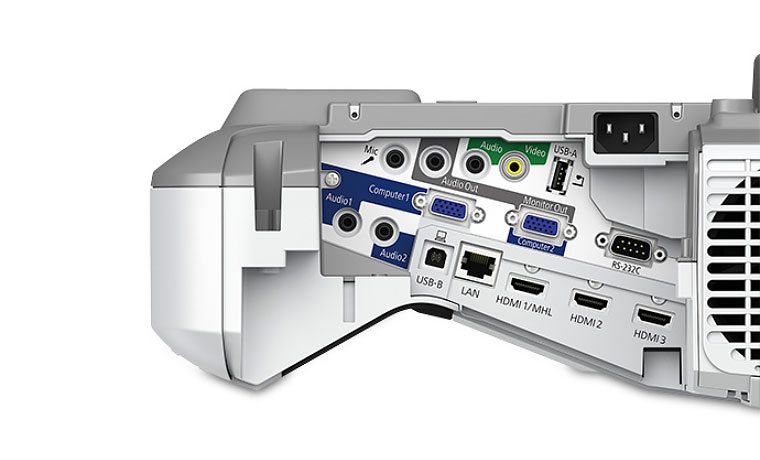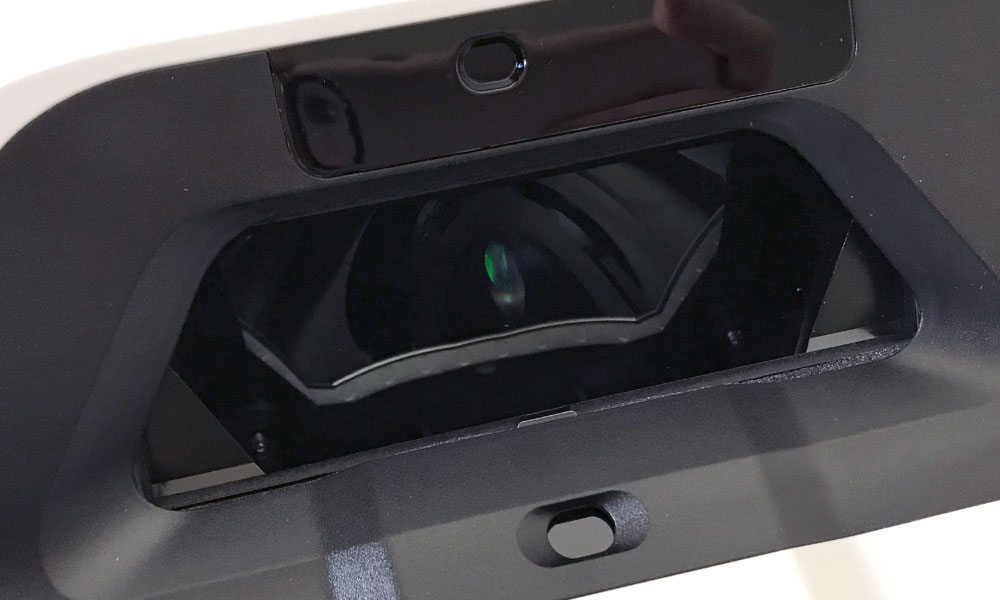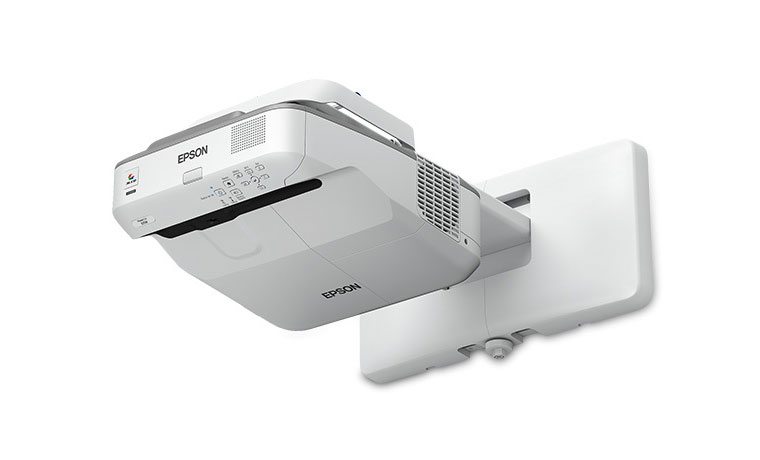
The Epson PowerLite 675W will likely be wall mounted, and therefore projecting upside down.
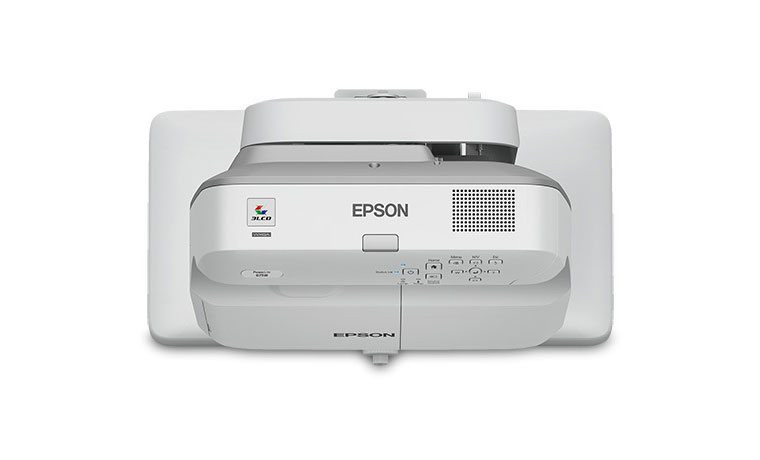
The 16-watt speaker faces the audience when wall mounted

The top of the projector has the lens, obstacle sensors, control panel, and lamp cover.
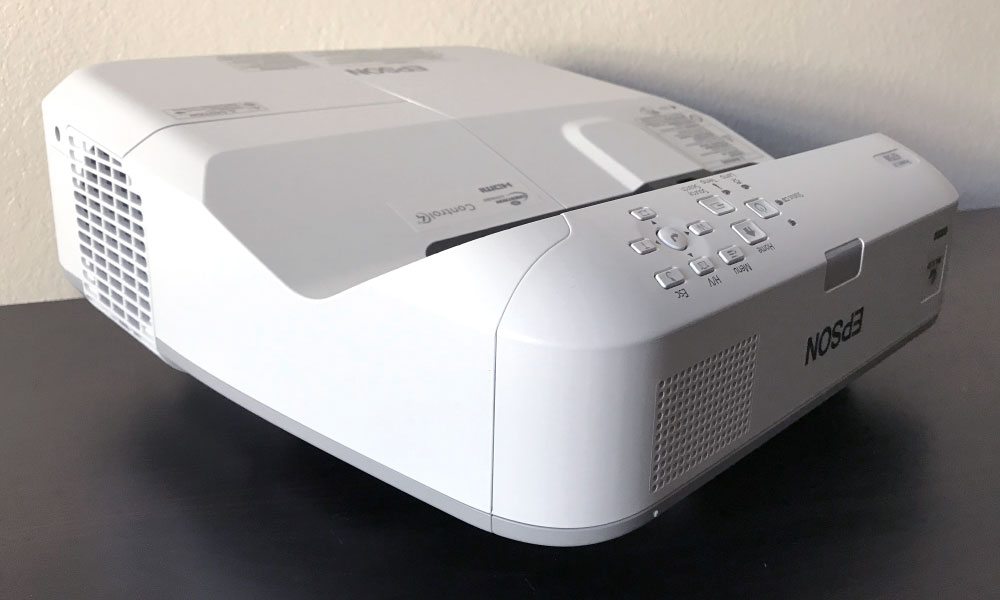
This side of the PowerLite 675W has the hot air exhaust vent and the cable cover which hides the inputs and connectors panel.
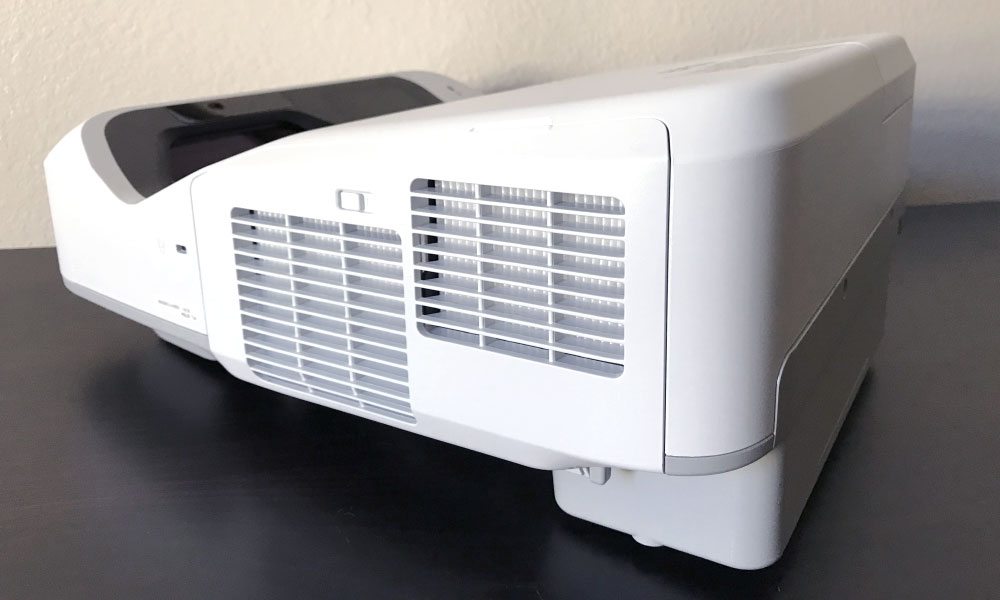
This side of the PowerLite 675W has the cool air intake vents and, behind the easy-release door, the focus lever.
❮
❯
The Epson PowerLite 675W is designed like all the other models in the PowerLite series – that is, I’ve seen the layout of the control panel, vents, input panel, etc., multiple times. I wouldn’t expect much of a difference in design amongst their ultra short throws – why change something that already works really well? I’m going to briefly go over where everything is on the projector, speaking of everything in relation to the 675W being wall mounted, and therefore, upside down.
Looking at the projector’s front, behind the lens, we have an IR sensor for the remote control. To its right lives the 16-watt speaker. Directly above that, at a slight angle, is the projector’s control panel, which is pretty typical in design. In front of that is the ultra short throw lens, along with the obstacle sensors. To the far right, you’ll find the Wireless LAN indicator light. Directly diagonal to that lens is the cover for the lamp.
Moving to the right side, we have the cable cover, under which dwells the inputs and connectors panel. On this same side, toward the back, is the hot air exhaust vent. On the other side, we have the cool air intake filters. There is an easy-release door that allows access to the focus lever. Now for the good stuff – the inputs and connectors.






